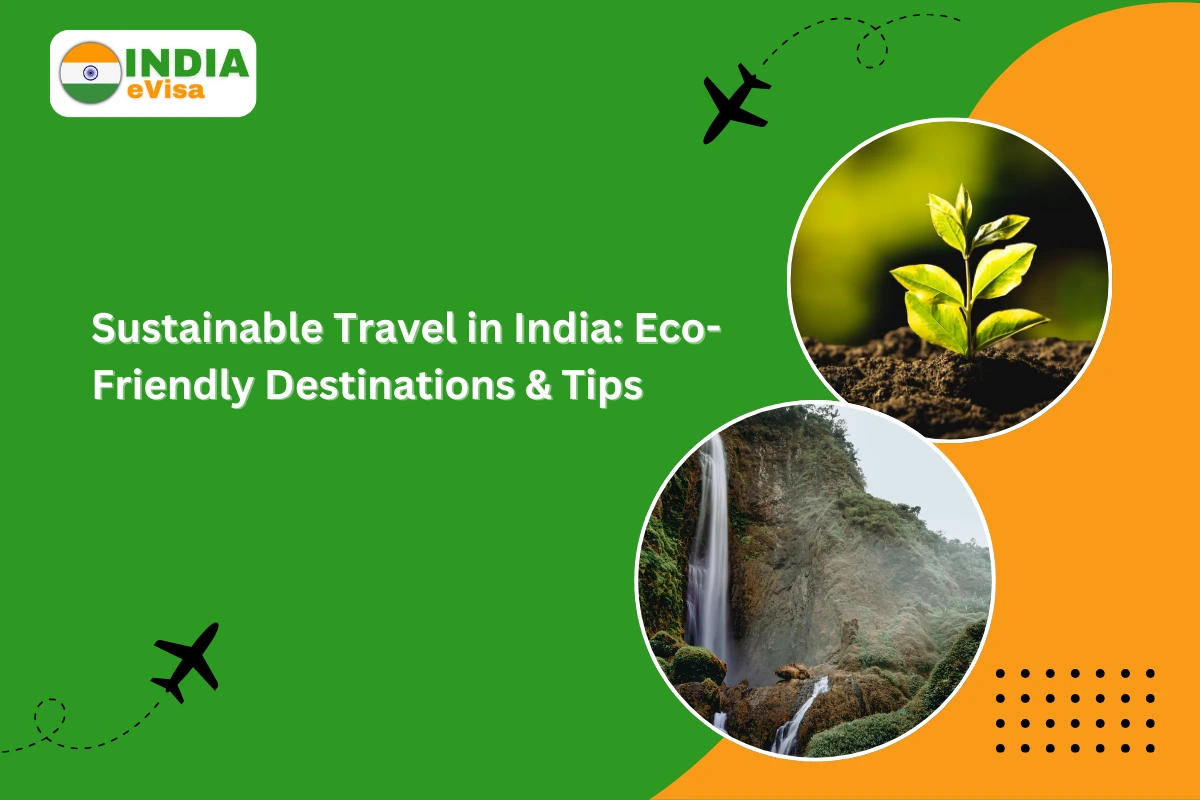Sustainable Travel in India: Eco-Friendly Destinations & Tips

Travel in India can be one of the most beautiful and eye-opening experiences you’ll have. From high mountain passes to quiet river islands and clean villages, this country has so many different lives and landscapes to meet. But traveling here also comes with a choice: we can travel carelessly, or we can travel in a way that helps nature and local people. This article is a friendly guide to doing the latter — how to enjoy travel in India while being kind to the places and people you meet.
1. Why Sustainable Travel Matters
When we travel in India, we bring energy, money, and waste with us. Some popular places become crowded, water becomes scarce, and plastic waste piles up. Sustainable travel means slowing down a little, choosing smarter options, and thinking about the long run. It means visiting places so that they stay beautiful for the next visitor — and for the people who live there.
Sustainable choices help keep rivers clean, forests healthy, and local traditions alive. When you choose to travel responsibly, you help create better jobs for local people and better experiences for yourself.
2. Eco-Friendly Destinations Worth Exploring
If you want your travel in India to feel green and meaningful, these places are a good start. They show how communities and nature can thrive together.
- Sikkim — This state focuses on organic farming and low plastic use. The mountains, small villages, and clean markets make it a calm place to visit.
- Mawlynnong, Meghalaya — Known as Asia’s cleanest village, Mawlynnong uses bamboo dustbins, composting, and rainwater harvesting. It is peaceful and very community-driven.
- Khonoma, Nagaland — Once known for hunting, Khonoma now protects its forests and follows sustainable farming. Visiting here supports local conservation.
- Thenmala, Kerala — A planned eco-tourism spot where nature and local jobs are valued equally. It is great for nature walks and learning about forest care.
- Kumbalangi, Kerala — A small village that offers homestays and backwater life. Staying here supports local families and teaches you real village life.
- Majuli, Assam — The world’s largest river island with community efforts to stay plastic-free and protect culture.
- Blue-Flag Beaches — Beaches with the international Blue Flag award meet high standards for cleanliness and safety. Eden Beach (Puducherry) and Radhanagar Beach (Andamans) are examples.
These are among the best places to visit in India if you want a gentle, low-impact trip. They are quieter, community-focused, and often more rewarding than crowded tourist spots.
3. Simple, Practical Tips for Greener Travel
You don’t need to be perfect to be kind. Here are easy habits you can start right away when you travel in India:
- Carry a reusable bottle and bag. Saying no to single-use plastic is the easiest change you can make.
- Choose homestays and local food. Eat where the locals eat and buy crafts directly from makers. Your money will help families and small shops.
- Pick eco-friendly hotels. Look for places that reuse water, use solar power, or compost kitchen waste. Even small guesthouses can do these things.
- Use trains and shared transport. Trains in India are efficient and leave a smaller carbon footprint than many flights. For short trips, walk or cycle.
- Respect wildlife. Don’t feed wild animals. Keep distance and follow park rules. Support operators who work with conservation groups.
- Save water and energy. Reuse towels, take shorter showers, and switch off lights when you leave the room.
- Leave no trace. Carry your trash until you find a bin. If you can, join local cleanups or give a small donation to groups that protect the area.
- Try off-season or offbeat spots. Visiting less busy places helps reduce crowding at famous sites and spreads income to new areas.
These small actions add up. If many travelers do them, the positive effect is big.
4. Planning Tips & Travel Documents
Before you go, prepare well so your trip is smooth and causes less stress for the places you visit.
- If you need a visa, check India Visa Online options early. This helps avoid last-minute problems.
- For accurate rules and updates, look at official India Visa Information on government portals.
- Ask tour guides and hotels about their sustainability measures. Many places are proud of what they do and will tell you.
- Look for eco labels like Blue-Flag, LEED, or local community certifications.
Planning ahead gives you time to choose better options and to support eco-friendly projects when you arrive.
5. Final Thoughts: Travel with Heart
Travel in India is not just about ticking places off a list. It’s about meeting people, learning things, and leaving places better than you found them. When you choose slower travel, small homestays, and local food, you get real memories — and you help protect the land and culture that made those memories possible.
So pack light, bring a reusable bottle, ask questions, and travel with respect. The best places to visit in India will welcome you, and your careful choices will help keep them beautiful for many more visits to come.
